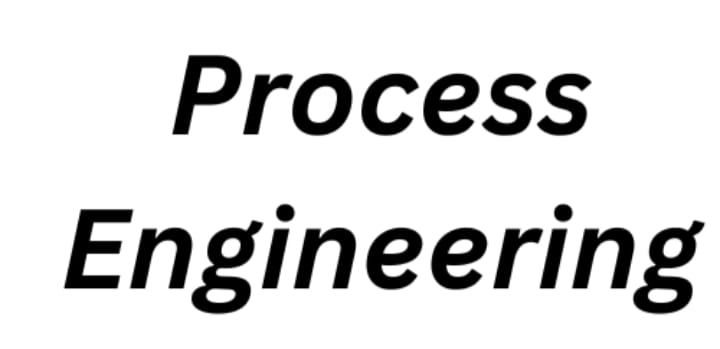What is Ejector :-
The ejector is a vacuum device, has no moving part, and creates a vacuum by high-pressure stream.
The two most common ejectors are operated by water (or process liquid) or steam. The liquid ejector is used for creating a modest vacuum or for mixing liquid. The steam ejector is widely used for creating and holding a vacuum in a system.
Steam ejector working principle
Steam ejector work on the principle of Bernoulli’s equation, its states that as the velocity of a fluid increases, its pressure decreases, and vice versa.
Motive chest:-
Motive chest is a part where motive steam enter the steam ejectorMotive nozzle:-
The nozzle has a converge as well as diverging sections. steam enters the nozzle, where it goes to the converging section where area decreases velocity increases & it increases to sonic velocity (mach no. =1). then it goes to diverging section where the area increases, velocity also increases to supersonic velocity as per the continuity equation. The continuity equation for a compressive fluid state that " if mach no. is greater than 1 means (supersonic zone) that time as area increases velocity also increases".
Suction chamber:-
high-velocity steam enters the suction chamber through the nozzle. As we know, velocity increases and pressure decreases so the suction chamber has a low-pressure area ( vacuum) that sucks gases from a vessel and creates a vacuum in a vessel. steam and gases go to a diffuser.
Diffuser:-
Velocity converted back to pressure. In the converging section velocity decreases and pressure increases. Diffuser throat is designed for a transonic shock system. The transition from supersonic to subsonic flow. after the throat, it goes to the diffuser section, because the subsonic flow area increases velocity decreases, and hence pressure increases. It acts like a compressor.
Features:-
Ejectors have features that make good choices for continuously producing economical vacuum conditions :
1) They handle wet, dry, or corrosive vapor mixtures.
2) They develop any reasonable vacuum needed for industrial operations.
3) It will be used for small as well as large capacity requirements.
4) Their efficiencies vary from reasonable to good.
5) They have no moving parts so maintenance is low and operation is fairly constant when corrosion is not a factor.
6) Quiet operation.
7) Stable operation within design range.
8) simple operation.
Type of ejector:-
1) Single-stage:- Single-stage ejectors are commonly used in industries. It is recommended pressure from atmospheric to 50 mmHg abs. The steam outlet from the ejector is either exhausted to the atmosphere or on top of the water in a sump.
2) Multi-stage:- The multi-stages, with or without interstage condensing of steam, allow the system to operate at lower absolute pressure than a single-stage unit. multi-stage can generate pressure from the atmosphere to 0.003 mmHg abs. To create that much low pressure six ejectors were used.
Condenser:-
Condensers are used in ejectors to condense steam. Surface condensers or Baromatric condensers are generally used in ejectors. As per requirement condenser positions are decided.
1) Precondenser:-
Precondenser is recommended for any ejector system when the pressure condition and coolant temperature will allow condensation of vapor, thus reducing the required design and operating load on the ejector. this situation when operating a distillation column under a vacuum. The overhead vapor is condensed in a unit designed to operate at top column pressure, with only the non-condensable vapor remaining after condensation passes to the ejector system.
2) Intercondenser:-
Intercondenser is used when the ejector is placed in series, It condenses the from a preceding ejector stage, thus reducing the inlet quantity of vapor mixture to the following stage. This is a means of increasing the steam economy.
3) Aftercondenser:-
Aftercondensers operate at atmospheric pressure. They do not affect the steam economy or ejector performance, but they do avoid the nuisance of exhausting steam to the atmosphere, thus allowing steam to be recovered. They also serve as silencers on the ejectors.
Vacuum safety
1) inadequate vacuum relief devices placed on the equipment or system being evacuated.
2) Block valves are installed to allow the blocking off of equipment (vessels, tanks, etc.) thereby pulling a higher vacuum than design, if not a "full" vacuum.
The implosion or collapse danger is real even for a tank, for example, that is not designed for vacuum (such as an API large tank), and liquid is pumped out of the tank thereby creating a negative vacuum, which collapses the roof or sidewall.
3) Air leakage, depending on the quantity, can create an explosive mixture in some process reaction systems; therefore, the system should be tested for air leaks and kept as tight as practical.
Performance factor:-
1) Steam pressure:-
The motive steam design pressure must be the lowest expected pressure at the ejector nozzle. the ejector will not operate stably if steam pressure is below the design pressure.
Recommended steam design pressure = minimum expected line pressure at ejector nozzle minus 10 psi.
2) Effect of wet steam:-
Wet steam erodes the ejector nozzle and interferes with performance by clogging the nozzle with water droplets.
3) Effect of superheated steam:-
A few degrees of superheat are recommended (5-15 F), but if superheated steam is to be used, its effect must be considered in the ejector design. A high degree of superheat is of no advantage because the increase in available energy is offset by the decrease in steam density.


.jpg)